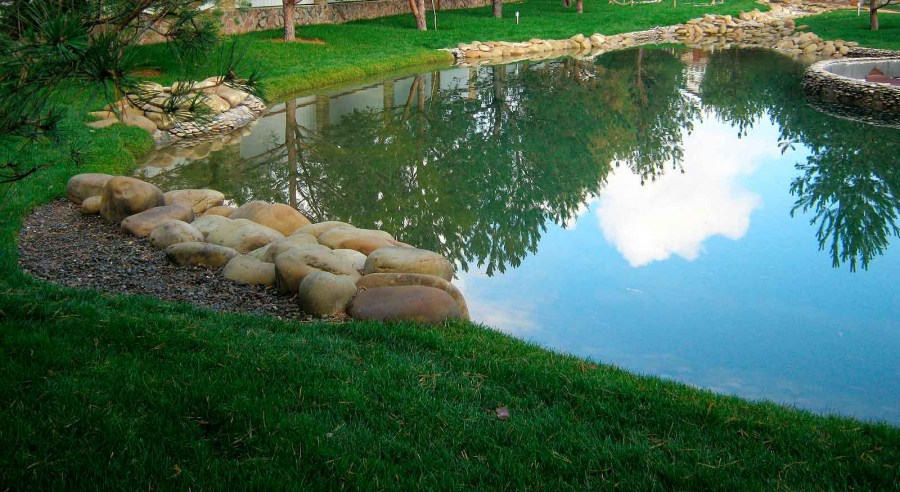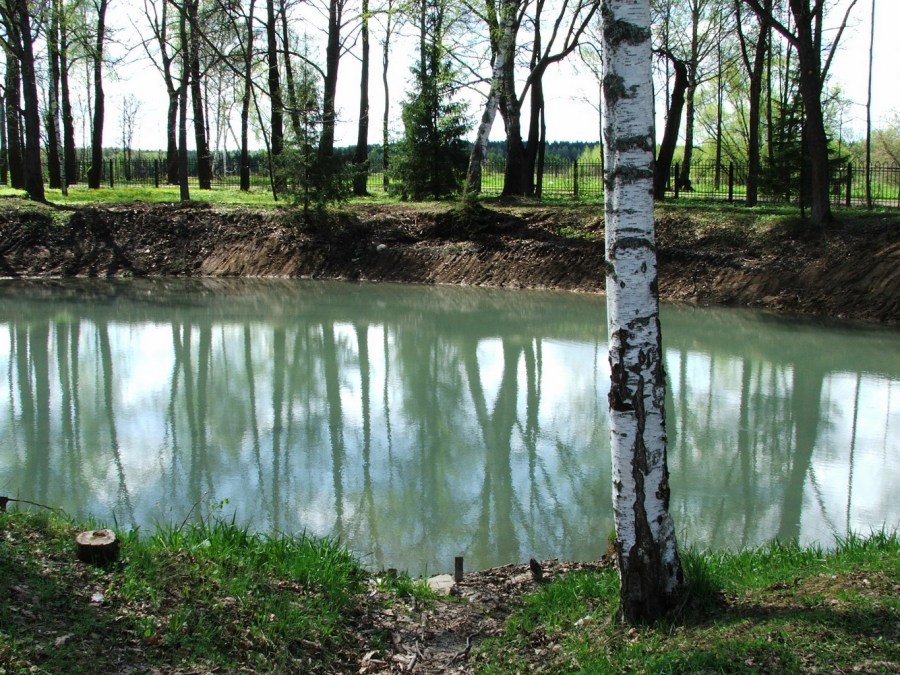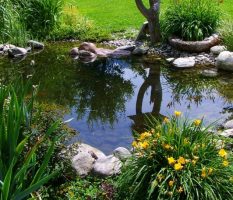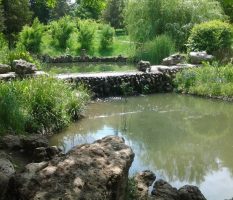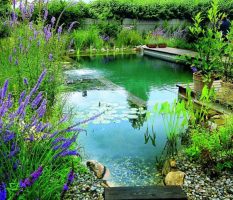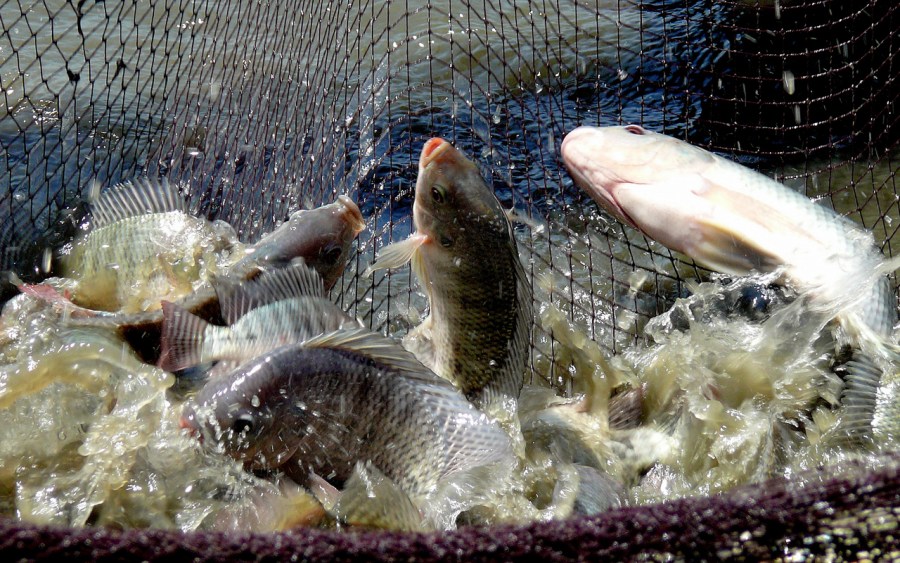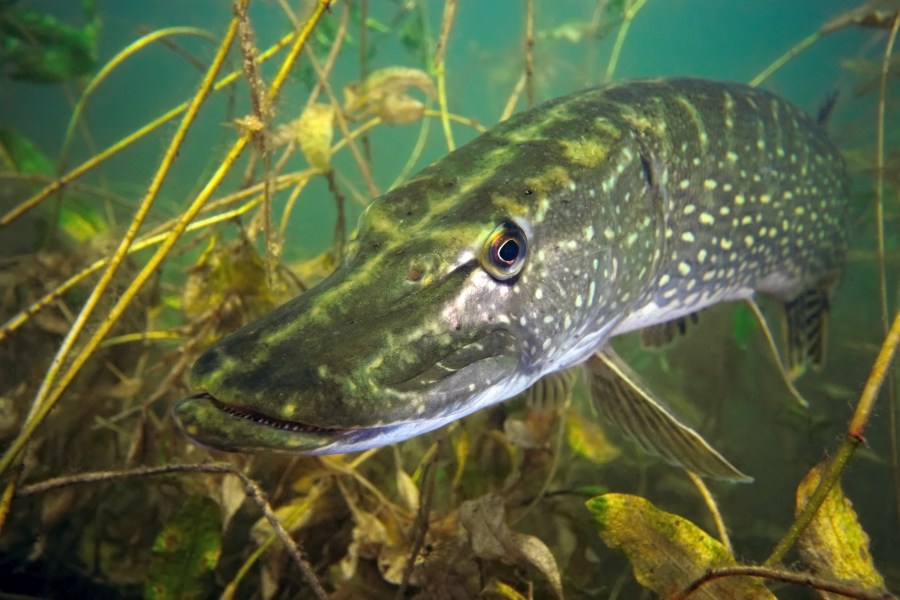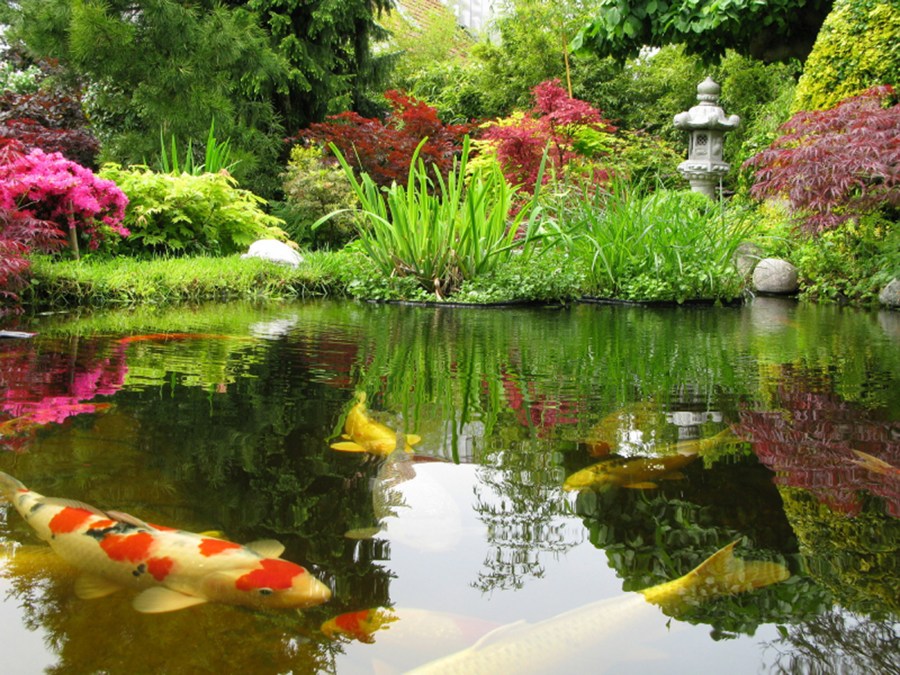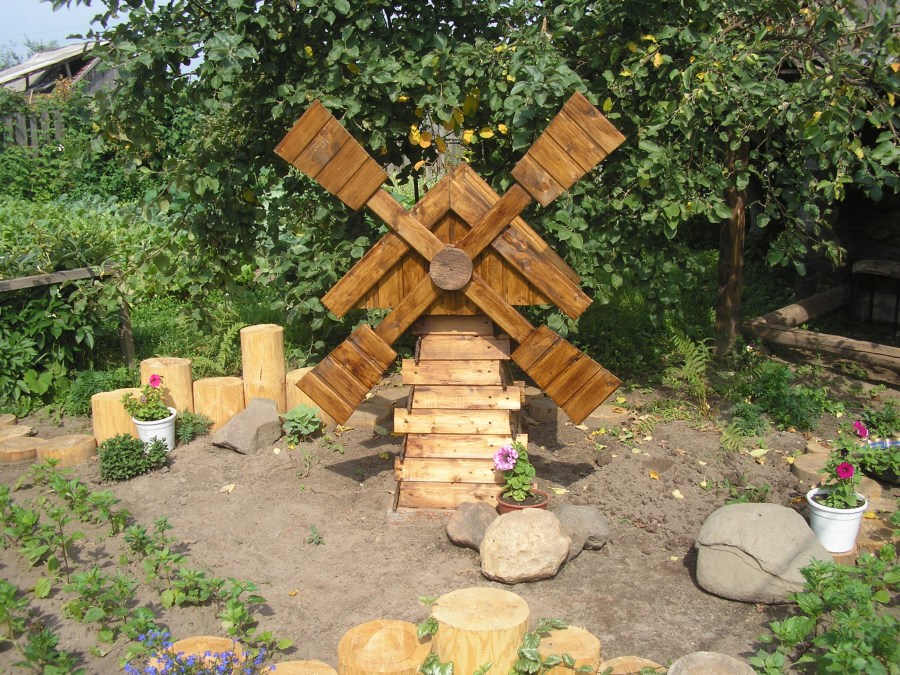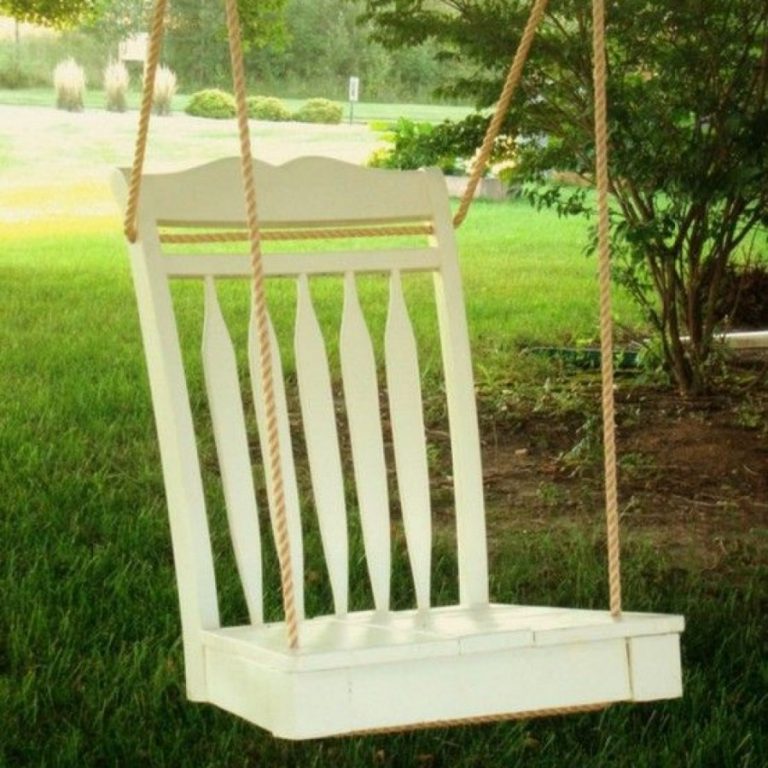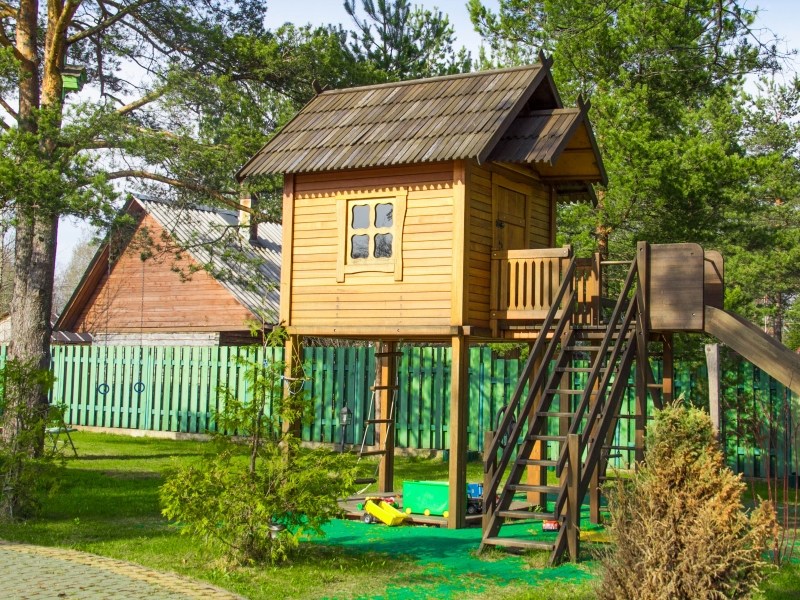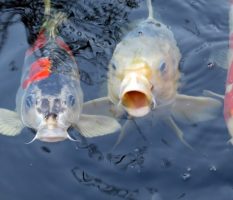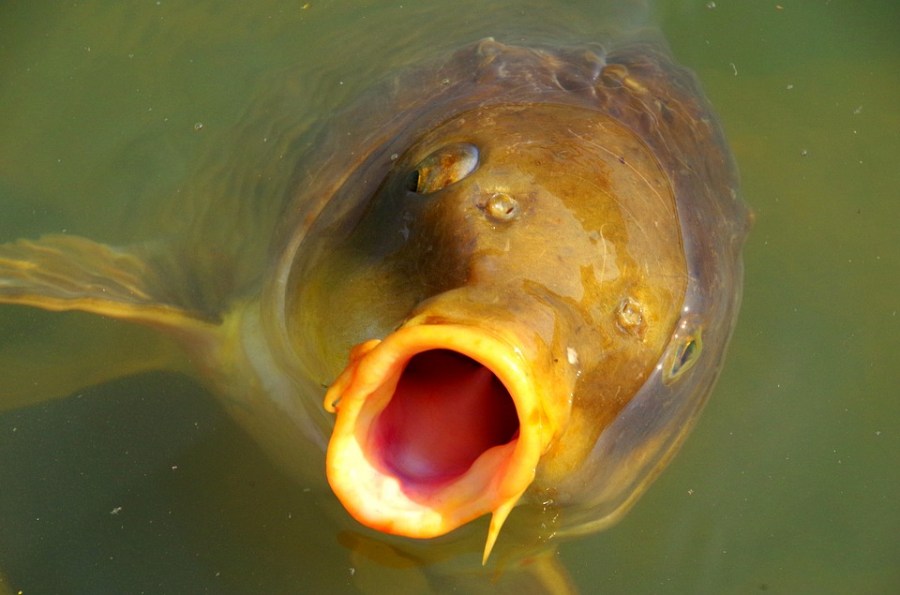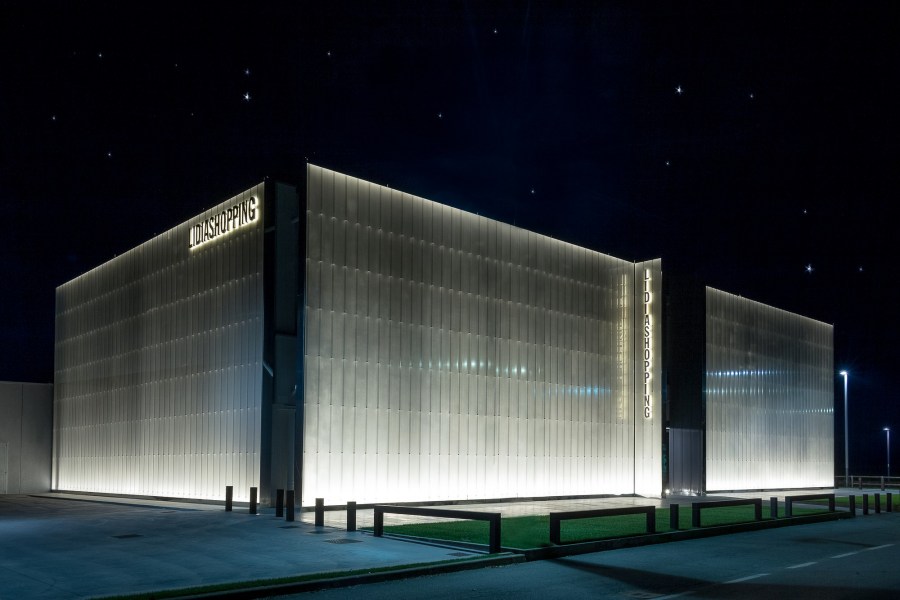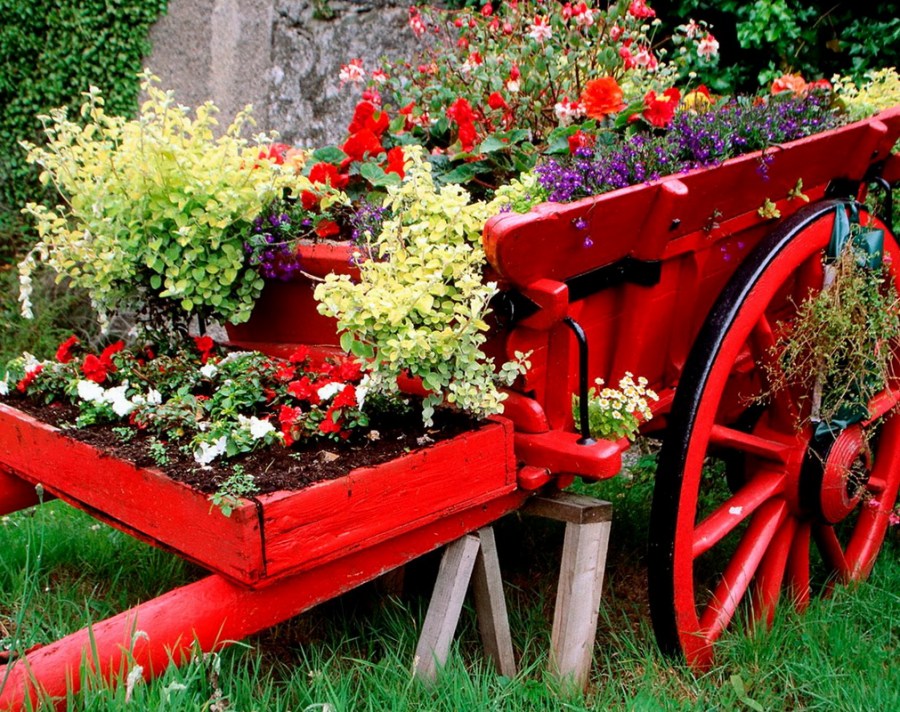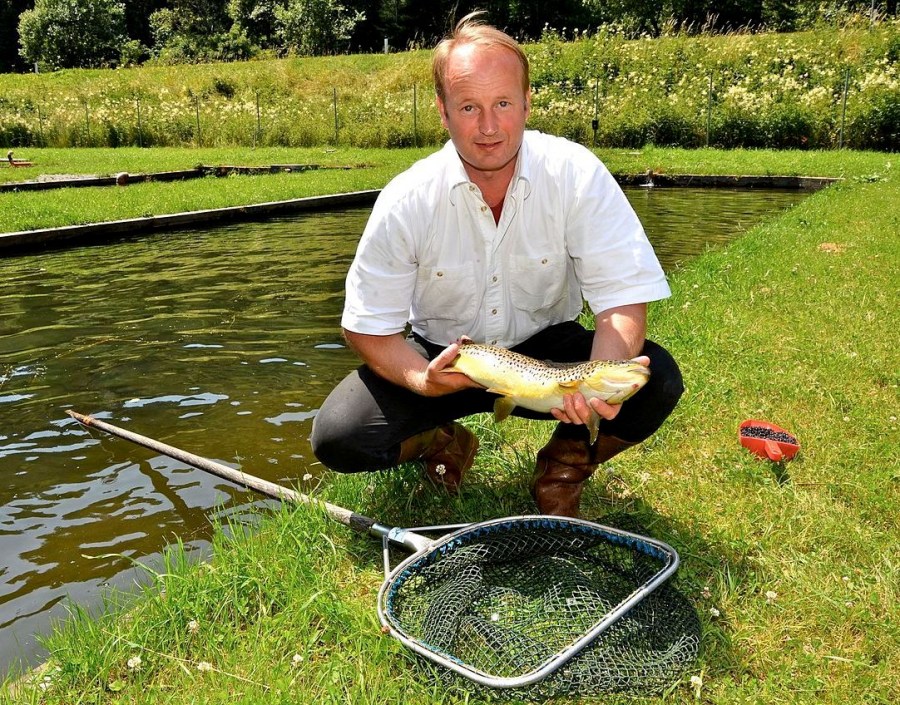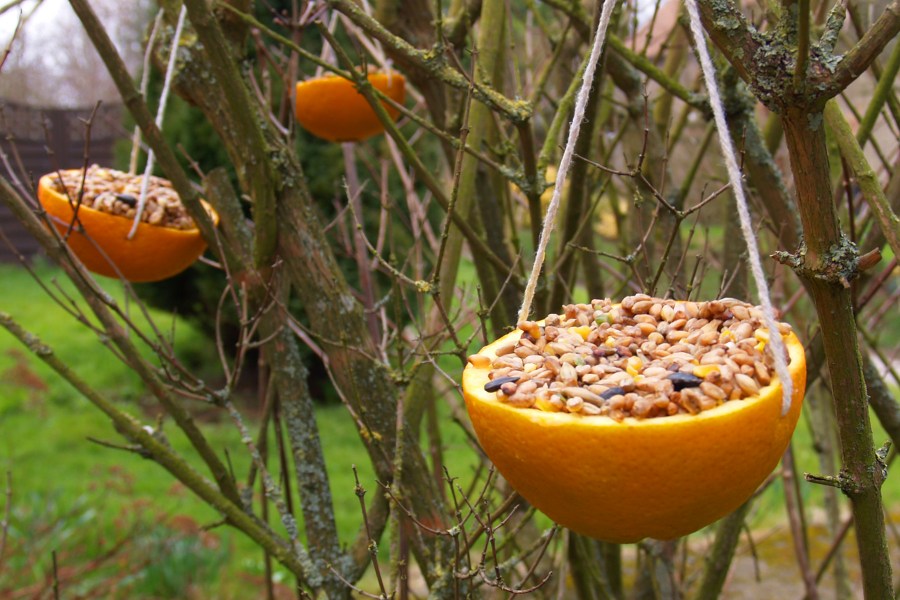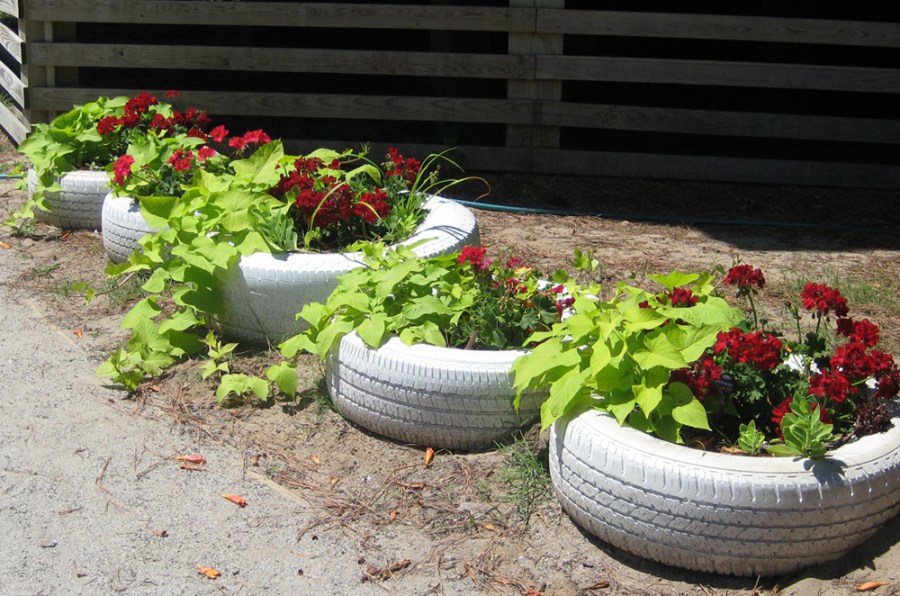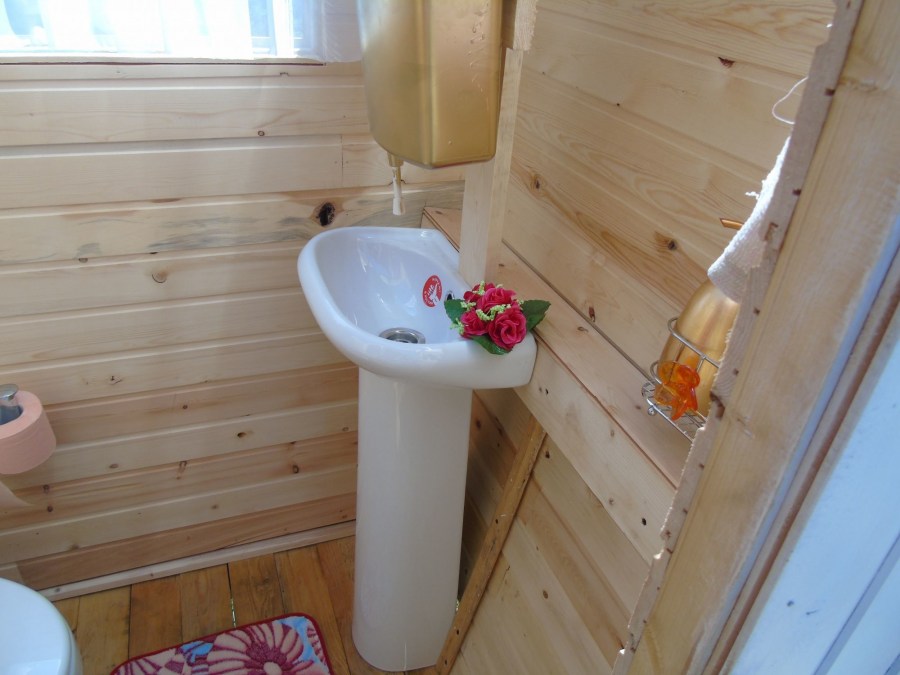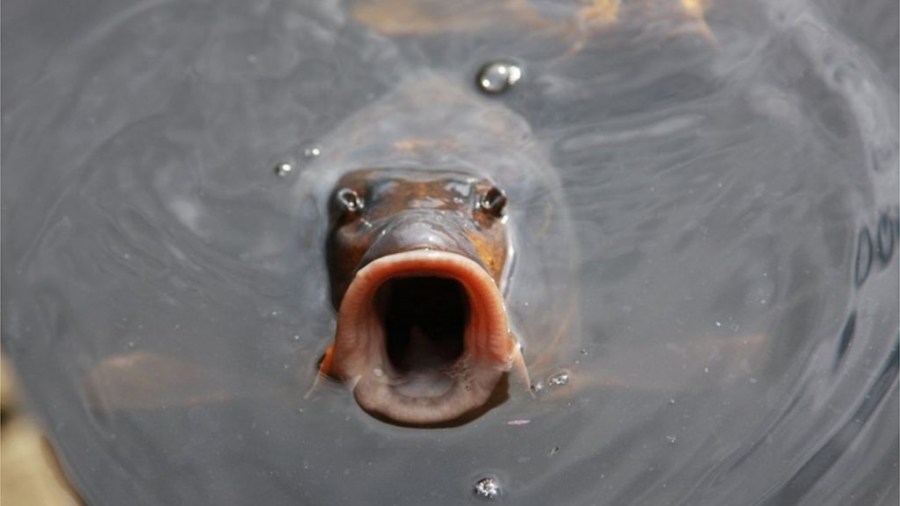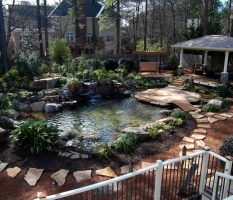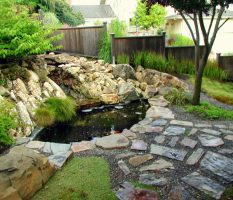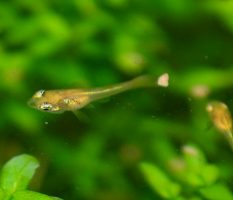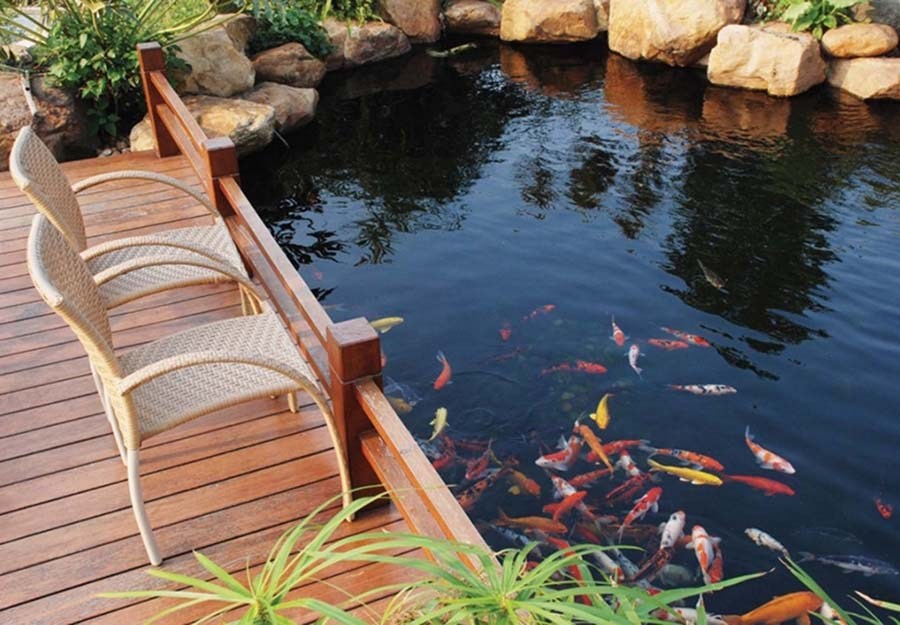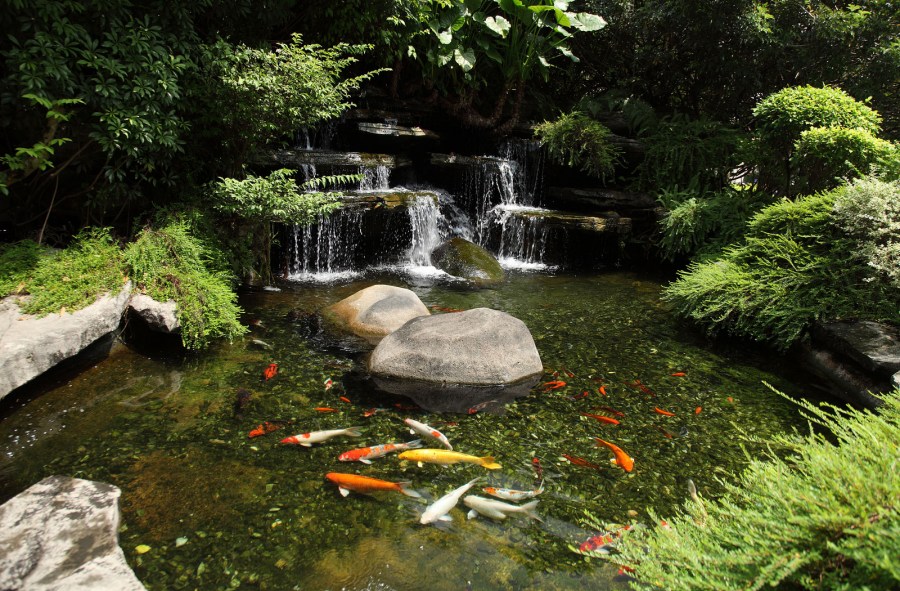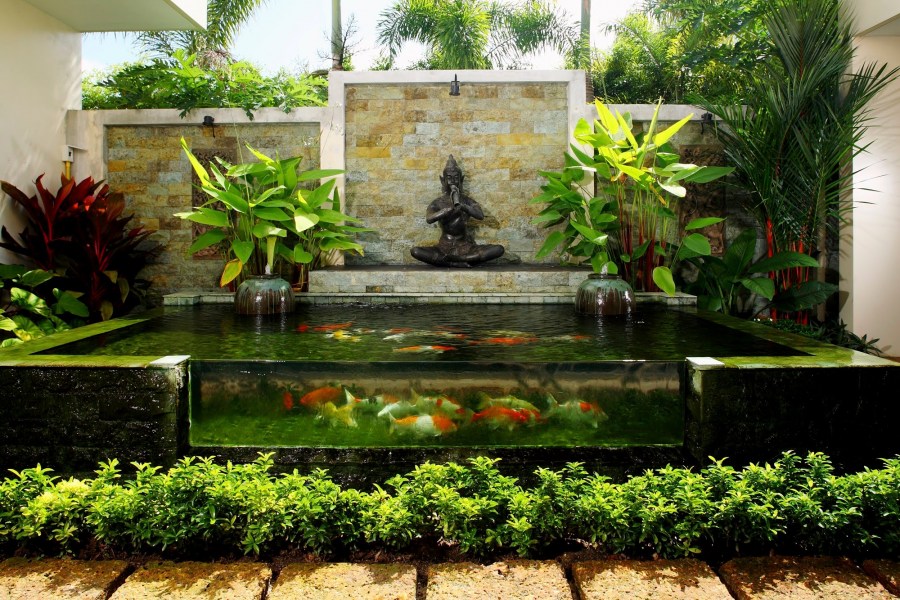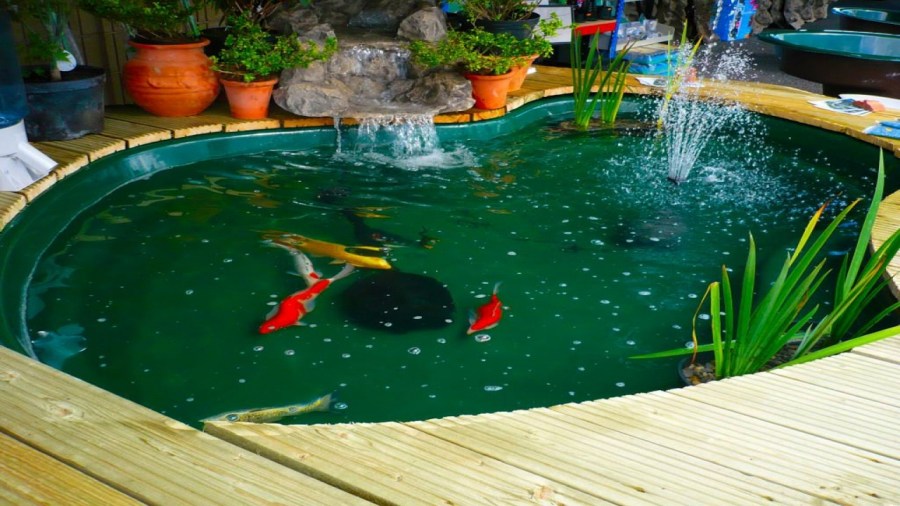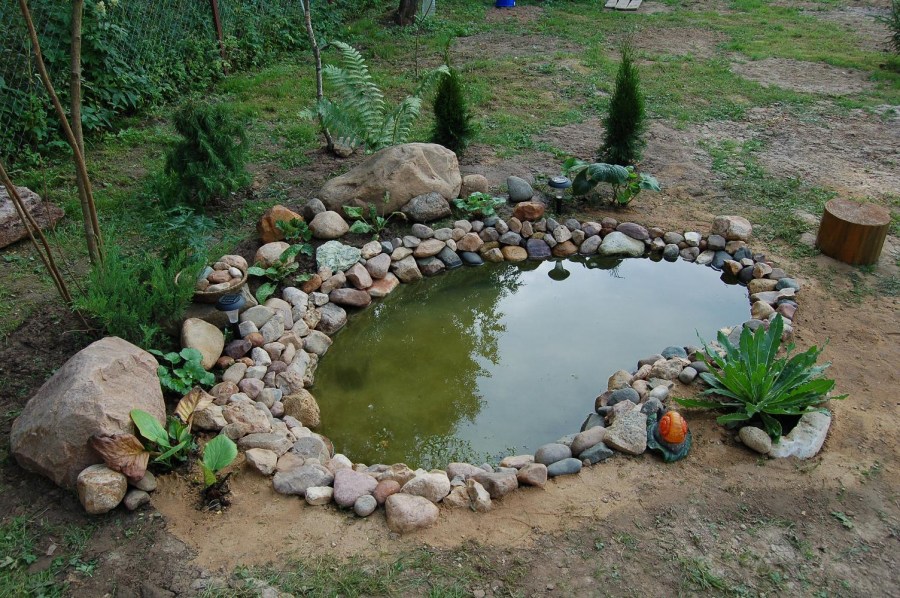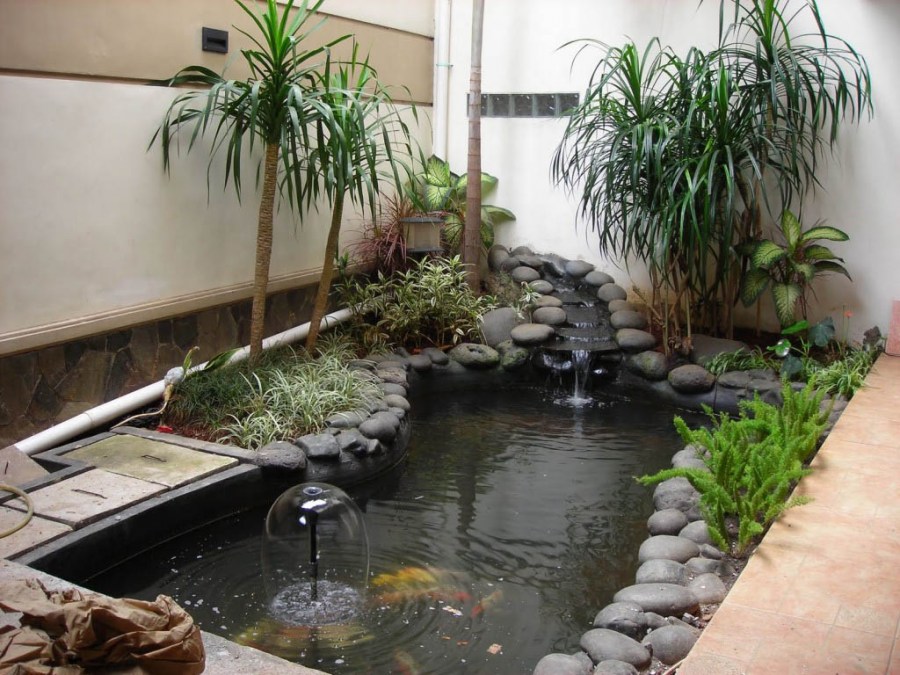Fish farming in the pond - artificial cultivation of exotic and valuable fish varieties (80 photos)
An artificial pond can be not only an element of the decor of a summer cottage. With the right approach, you can independently grow fish in it. Fish farming will not only provide you with an interesting hobby, useful home fish, but it can also become a small profitable business.
In order for fish farming at home to become a successful activity, you must correctly select the type of fry for breeding, the size and location of the reservoir, and provide the fish with comfortable conditions for growth and reproduction.
Seat selection
When creating a pond for breeding fish, it is important that it is positioned correctly. For this purpose, the most low-lying, sunny place of your site is well suited.
There should not be trees and shrubs nearby - their roots can damage the bowl of the reservoir. It is also recommended to place the pond far from the buildings in order to prevent their shrinkage.
Dimensions
The optimal size of the reservoir for breeding fish is 15-50 square meters, the depth should be at least 1 meter and no more than 3, while it is preferable that the bottom has differences in relief. Due to the differences, the water will warm up well in the smallest places, and in the deepest the fish can winter.
The calculation of the volume of the future pond directly depends on the planned species and the number of fish that will inhabit it. One fish measuring 10 cm on average needs 50 liters of water.
Water inlet and outlet
You should immediately think about how and from which source the water will come. This will decide the appearance and design of the bowl. You can bring water along the bottom of the reservoir. Then the pipe needs to be dug and brought out at the bottom of the reservoir. Water can also come from an artificially made stream or water cascade.
To fill the pond, both tap water and from an artificial well or collected rainwater are suitable. After filling the bowl, wait 3-4 days, wait for the water to warm up and only then start the fish, this will create more comfortable conditions for it.
Water can be diverted into a gutter or the nearest creek. For this purpose, a pipe is mounted at the bottom. You can also pump out water and use it for irrigation.
Building
After calculating the required volume of the pond, you should dig a multi-stage pit. The steps should be 20-30 cm wide, the number should be from 2 to 4. The soil in the pit should be carefully leveled and tamped. After the soil should be sprinkled with sand (15-20 cm) and crushed stone (about 5 cm), pour 10-15 cm of reinforced concrete on top. After laid waterproofing. The banks can be decorated with large stones.
To build a pond of such complexity is a difficult, costly business. But this design of the reservoir is the most convenient and durable. The bowl of the pond will be protected from damage, and the steps made will serve not only to place the plants, but will also be convenient for lowering into the bowl and washing it.
A more budgetary option would be to cover the bottom of the earth with a dense plastic wrap. The method is very unreliable, so a combination of methods is often done - the walls and bottom are cemented and a film layer is laid on top.
If you plan to winter the fish in the same pond, it is recommended to make a “wintering pit” in it. Most often it’s just a barrel without a lid dug to the bottom of the pond, in which water will not freeze in the winter.
Ecosystem Design and Creation
Hydrophilous sedge, host and ferns will help to create the area around the reservoir. For planting on the first underwater steps of the pond, calamus is well suited.For a large reservoir, marsh calf is preferred, reaching 1 m in height, and for a small one, cereal calamus is 40 cm high. Pots with a wing-wing can be arranged on the steps. Do not sit it freely - it will grow rapidly throughout the water mirror.
Since an artificial pond is a closed system, then it can not do without aquatic plants and algae. It just needs plants that produce oxygen. The most active plants in this regard are hornwort, watercup, buttercup and watermoss. Plant them in pots and place them on the bottom of the pond.
In order to prevent the pond from being polluted with excessive algae and to protect it from overheating, such deep-sea plants as a water lily, brazii and egg capsule will help. Their root system is at a depth, since the upper part floats on the surface.
Also, floating non-rooting plants - roguelica, vodokras, azolla will save from overheating and flowering water. The number of these plants must be regulated independently, as they can quickly cover the entire surface of the reservoir.
Many experts advise pouring 2-3 buckets of river water into it when filling with a tap or artesian water. This will help small algae multiply in it and create a familiar ecosystem for fish.
It is imperative to constantly monitor the acid-base balance of water. The optimal value is 7-8 pH. If this indicator is reduced to 5, limestone or soda should be added to the water until the desired pH values are obtained.
Fish species
In order for the fish pond in the country house to be not only an ornament, but also profitable, it is necessary to choose the right inhabitants for it.
The easiest to maintain and breed are thermophilic species of fish (tench, carp, crucian carp). They are not demanding in nutrition, ambient temperature and water acidity and get along well with each other.
Cold-loving species (trout, peled, whitefish) are very demanding on the concentration of oxygen in water and are poorly suited for home breeding. To create conditions for breeding fish of cold-loving breeds is a very painstaking and expensive task.
If you want the pond to have a purely decorative character, then unpretentious veil tails and tops are well suited for breeding. Minnow ponds and Japanese carps can live in ponds with artificial aeration.
Acquisition of fry
Buy fry now is not difficult. There are many companies involved in the cultivation of fish for stocking ponds.
To buy a young fry of 7-14 cm in size will cost about 70 rubles, crucian carp (35-45 cm) - 200 rubles apiece, crucian carp up to 40 cm in size will cost an average of 100 rubles.
Feeding
Since fish farming in a small pond can only take place by the intensive method, the issue of feeding is very acute here.
The diet of fish should be based on the preferences of the fish species you breed. It can be both live food (bloodworms, mollusks, worms), and grain or flour.
You can use ready-made compound feeds sold in special stores. You can also use feed for pigs, but its content in the diet should not exceed 25%.
In the summer, fish are fed twice a day, while in the cold season, the fish stop eating. In the spring, it is recommended to feed the fish once every two days.
The food should be poured with special pallets and it is not recommended to give food more than the inhabitants of the pond can eat in 15 minutes. For fast growth, animal proteins and mineral supplements can be added to the diet.
Winter season
Prepare fish for the winter period will help intense, proper nutrition. A healthy, strong fish will easily tolerate the cold.
Wintering of fish is possible only in reservoirs having a depth of more than 1.5 m and having a bottom wintering pit.
Regularly make wormwood in the ice crust formed on the surface of the pond. Do not completely remove ice from the surface - this can lead to supercooling of water.
You can pump out some of the water from a frozen pond with a pump - this will increase the air gap that enriches the water with oxygen. Also in winter, you can use an aerator.
Now you know how to raise fish in a pond. How profitable this is is up to you. However, one cannot but agree that a home pond with real fish can be a great place for home relaxation and just a bright design decision to design a summer cottage.
Photo of the fish breeding process in the pond
How to decorate a garden: 95 photos of simple ways to design a garden in an original way
Installation of fences: 110 photos and an overview of the basic installation methods
Join the discussion:
